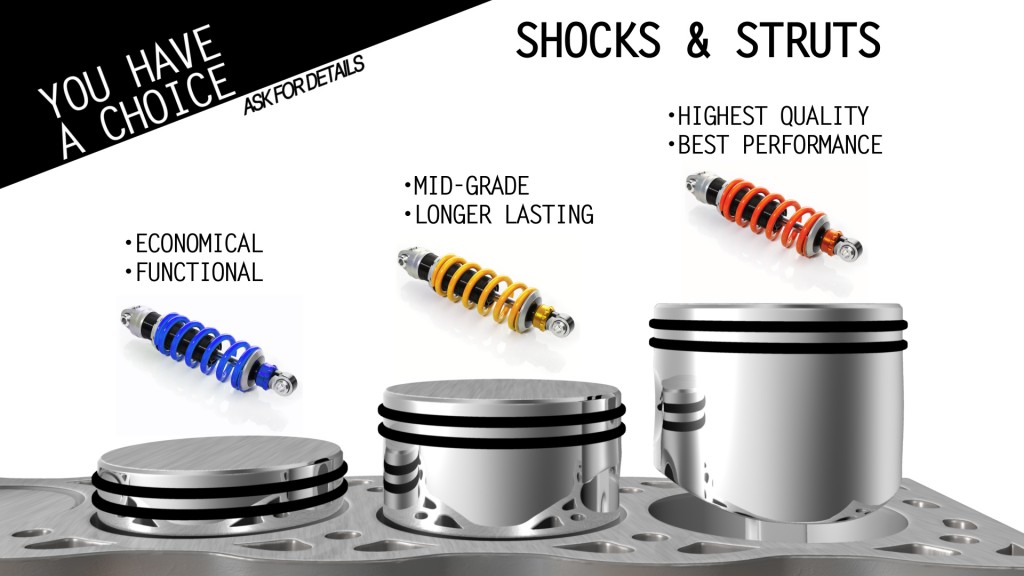Shock Value: Sell More Shocks and Struts
We rented an RV for fall break. We had a great four-day weekend – with the exception of driving the RV. The shocks were completely shot. I’d say it wallowed like a pig in mud, but I think mud has more damping power than those shocks did. The 600 highway miles were a white knuckle experience. Bumps sent the coach bobbing and sudden blasts of wind completely discombobulated (yes, that’s a technical term) the ride. I could feel that tire control was sketchy and body control was practically non-existent. I knew there was no way I could control the vehicle if I had to make an extreme maneuver.
When we got back, I reported this to the owner who was completely surprised. She said she always pays a little extra for the shop to do an inspection when she has the oil changed and they’ve never said anything about the shocks. Similarly, one of my co-workers was recently having some repair work done on his 120,000 mile sedan and asked if he should get new shocks and struts. The technician looked them over and said, “Your shocks aren’t leaking and new ones are real expensive. You don’t need them.”
Apparently this is fairly common. I spent several days last month working on a project with Mac McGovern, Director of Marketing and Training for KYB. Mac reports that in his training sessions, he asks technicians and service advisors how they are selling shocks and struts. They quickly answer that they recommend replacement when a unit is damaged or leaking. Beyond that, they really don’t have a methodology for evaluating the condition of their customers’ shocks and struts let alone a sales presentation.
Of course, technicians don’t have X-ray vision so they can’t look inside the shock to see that its stage 1 and stage 2 valves are suffering from metal fatigue. And few shops have expensive damping testers. Shocks and struts wear so slowly that consumers don’t notice how much their tire and body control has deteriorated from new. So what is a service advisor to do?
First, I suggest a little education. By the time a vehicle has clocked 50,000 miles, those little metal valves in the shocks have flexed open and shut 75 million times – they’re simply fatigued and don’t offer the same hydraulic resistance they did when they were new. Even though they may not be as bad as the ones on the motorhome I drove, they don’t keep the tires as firmly on the road in everyday driving as they used to and the body is pitching around more than it should, negatively affecting safe handling.
Next, develop and commit to a routine of evaluating the condition of shocks and struts with a parking lot test. KYB has a ride control diagnostic process that might be useful on its website: http://www.kyb.com/service/ridecontroldiagnostic.php. When your customer understands that your goal is to restore their vehicle to the ride control intended by its designers, they will see the benefit of replacing their shocks and struts as a maintenance item rather than just upon failure.
So there are four opportunities to sell shocks and struts:
1. When a unit has failed
2. When shocks and struts have worn to the point that ride control and safety are significantly affected
3. As a maintenance item to restore designed ride control at around 50,000 miles
4. As an upgrade when the customer has additional performance, load, towing or off-road requirements
Get into the habit of evaluating the condition of your customer’s ride control and you’ll be shocked by how much you’ll sell.
Lance Boldt is Vice President and Co-Founder of AutoNetTV. AutoNetTV’s digital signage products deliver entertaining and educational TV programming to the lobbies of automotive service and repair businesses as well as digital menu boards and automotive website video content.

